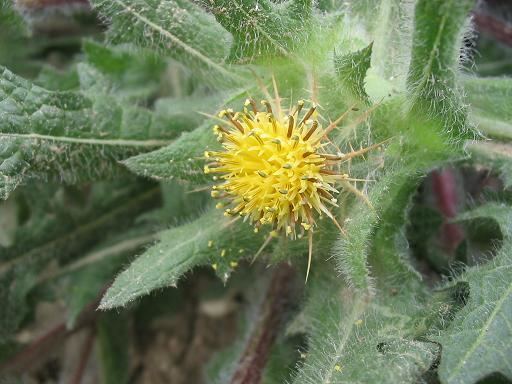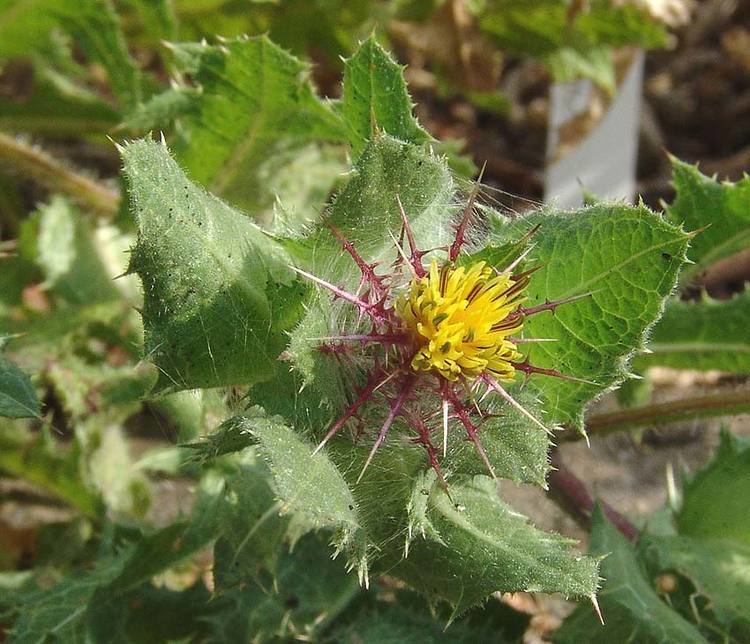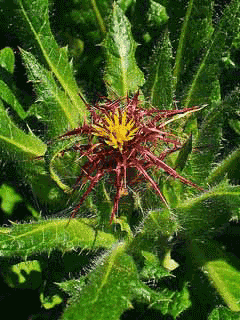Tribe Cynareae Scientific name Cnicus benedictus Rank Species | Genus CnicusL. Higher classification Cnicus | |
 | ||
Similar Milk thistle, White horehound, Common wormwood, Marsh mallow, Norwegian angelica | ||
Cnicus benedictus with translation text
Cnicus benedictus (St. Benedict's thistle, blessed thistle, holy thistle or spotted thistle), is a thistle-like plant in the family Asteraceae, native to the Mediterranean region, from Portugal north to southern France and east to Iran. It is known in other parts of the world, including parts of North America, as an introduced species and often a noxious weed. It is the sole species in the monotypic genus Cnicus. Largely reclassified to Cirsium, Carduus, Centaurea
Contents
- Cnicus benedictus with translation text
- Mo narave kordabenedikta ali cnicus benedictus
- Growth
- Medicinal uses
- Edibility
- References

Mo narave kordabenedikta ali cnicus benedictus
Growth

It is an annual plant growing to 60 cm tall, with leathery, hairy leaves up to 30 cm long and 8 cm broad, with small spines on the margins. The flowers are yellow, produced in a dense flowerhead (capitulum) 3–4 cm diameter, surrounded by numerous spiny basal bracts.

The related genus Notobasis is included in Cnicus by some botanists; it differs in slender, much spinier leaves, and purple flowers.
Medicinal uses

It has sometimes been used as a galactogogue to promote lactation. The crude extracts contain about 0.2% cnicin. It is also a component in some bitters formulas.

The roots of the blessed thistle is used by Algerian locals to heal burns and wounds. When root powder mixture was added to rat wounds during a study, the powder proved more effective in healing the wounds than in natural time.
In Shakespeare's comedy Much Ado About Nothing, this thistle, in tincture form, is recommended for a cold.
Edibility
These thistles are not considered edible, unlike Cirsium, Arctium and Onopordum species; the leaves are considered unpalatable if not bitter.
